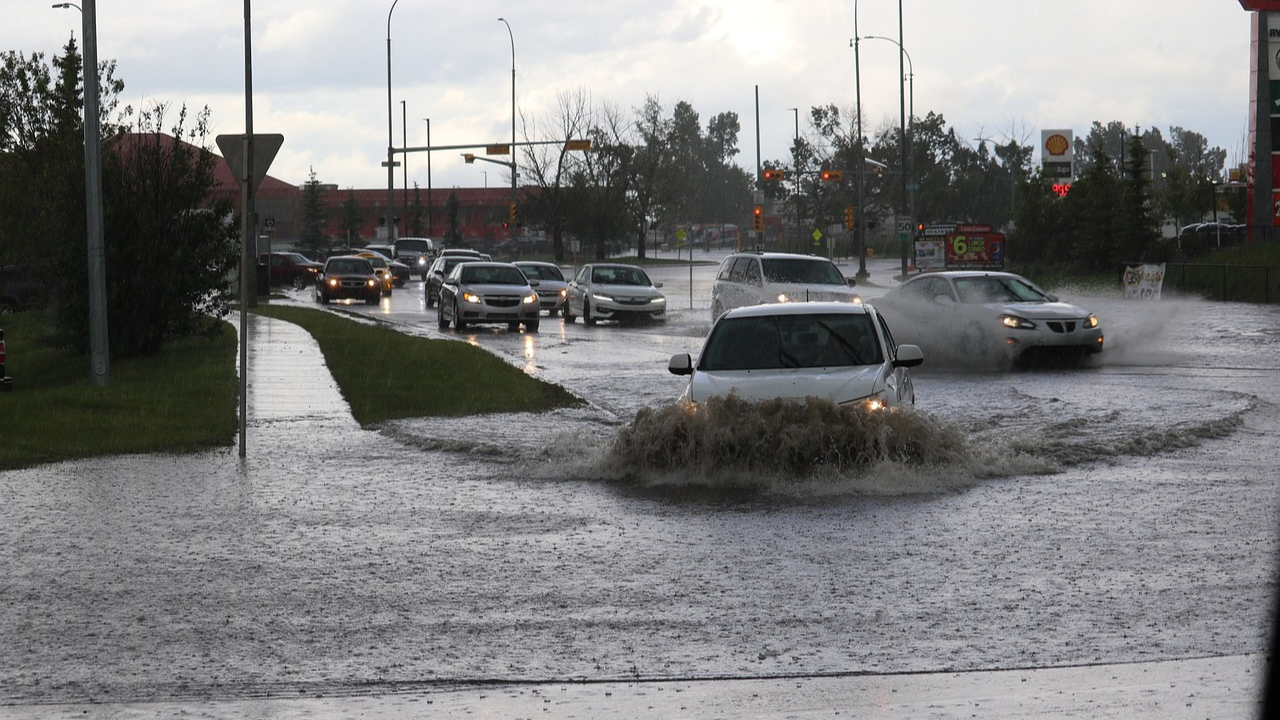
Pre-reading questions:
I will read each question. Then, please answer them.
- What causes changes in weather patterns?
- How does climate change affect our environment?
Vocabulary:
I will read the words, meanings, and sample sentences. Then, repeat after me.
- severe /suh-VEER/
- disruption /dis-RUHP-shuhn/
- transportation /trans-per-TEY-shuhn/
- trap /trap/
- contribute /kuhn-TRIB-yoot/
[adjective] – very great; intense
The storm caused severe damage to many buildings.
[noun] – disturbance or problems that interrupt an event, activity, or process
The earthquake caused a major disruption in the city’s transportation system.
[noun] – the action of moving people or goods from one place to another
Public transportation is essential for many people in cities.
[verb] – to catch and hold something inside a space
The net was used to trap fish in the river.
[verb] – to be one of the reasons why something happens
These changes in temperature contribute to climate change.
Article reading:
Please read the whole article. Then, I will check your pronunciation and intonation.
This autumn, Europe is experiencing severe weather patterns, highlighted by catastrophic floods in Valencia, Spain. These floods, which occurred in October, caused significant disruptions in the region. Floodwaters damaged transportation systems, inundated homes, and scattered vehicles along the coast. Reports indicate that at least 95 people were directly affected. In contrast, the United States faces a different challenge, dealing with a “flash drought” due to exceptionally dry conditions this month. Climate researchers have identified two primary factors behind these extreme weather events: rising air temperatures, which increase moisture in the atmosphere, and irregularities in the jet stream, a crucial wind current that affects global weather.
Climate experts believe that a phenomenon called Depresión Aislada en Niveles Altos (DANAs) played a significant role in the flooding in Valencia. This phenomenon traps moist air within a low-pressure system, leading to prolonged rainfall. Meteorologists like Jennifer Francis from the Woodwell Climate Research Center link these extreme weather changes to a warming Arctic. This shift alters temperature differences between high and mid-latitudes, disrupting the stability of the jet stream. Additionally, warmer seas, such as the Mediterranean this past summer, contributed to increased humidity, resulting in intense rainfall. Scientists agree that human-induced climate change worsens the severity of extreme weather.
Climate experts believe that a phenomenon called Depresión Aislada en Niveles Altos (DANAs) played a significant role in the flooding in Valencia. This phenomenon traps moist air within a low-pressure system, leading to prolonged rainfall. Meteorologists like Jennifer Francis from the Woodwell Climate Research Center link these extreme weather changes to a warming Arctic. This shift alters temperature differences between high and mid-latitudes, disrupting the stability of the jet stream. Additionally, warmer seas, such as the Mediterranean this past summer, contributed to increased humidity, resulting in intense rainfall. Scientists agree that human-induced climate change worsens the severity of extreme weather.
Comprehension questions
I will read each question. Then, please answer them based on the article.
- What severe weather event occurred in Valencia, Spain, this autumn?
- How many people were reported to be affected by the floods?
- What different weather challenge is the United States facing?
- What two factors have researchers identified as causes of extreme weather events?
- What phenomenon is linked to the flooding in Valencia?
Discussion questions
I will read each question. Then, please answer them.
- Have you ever witnessed severe weather in your community? If so, how did it affect your daily life? If not, how do you think it might affect you if it happened in your area?
- Have you learned about climate change in school or through other sources? If so, what did you find most surprising or concerning? If not, what would you like to learn more about?
- Do you think everyone should take steps to prepare for extreme weather events?
- What impact do you think severe weather could have on your community and local economy?
- What actions do you think individuals can take to help combat climate change?